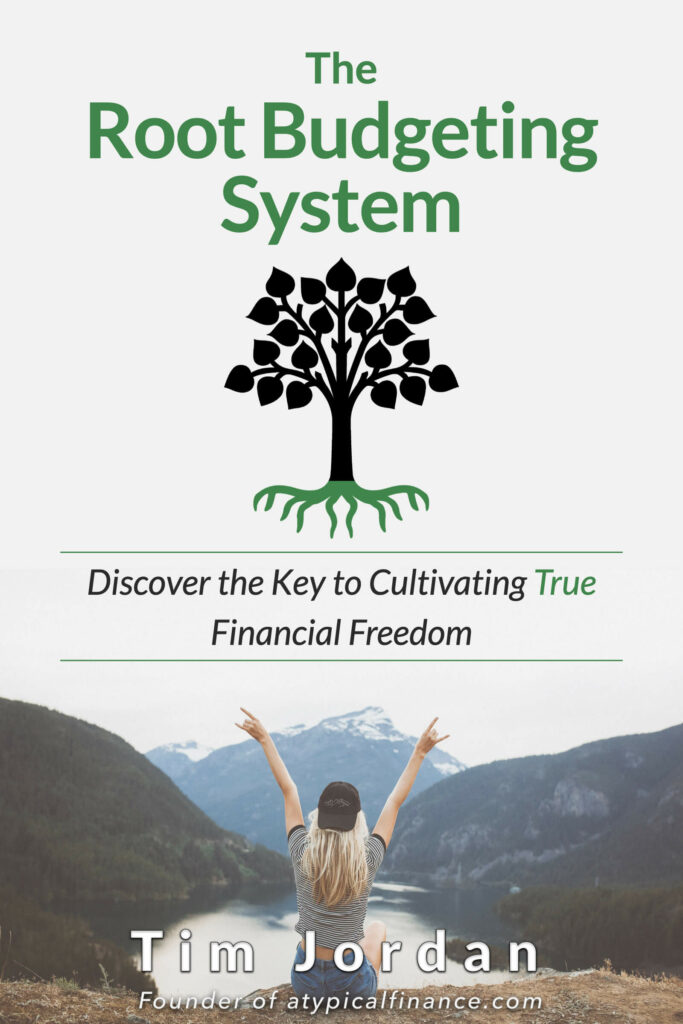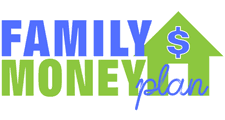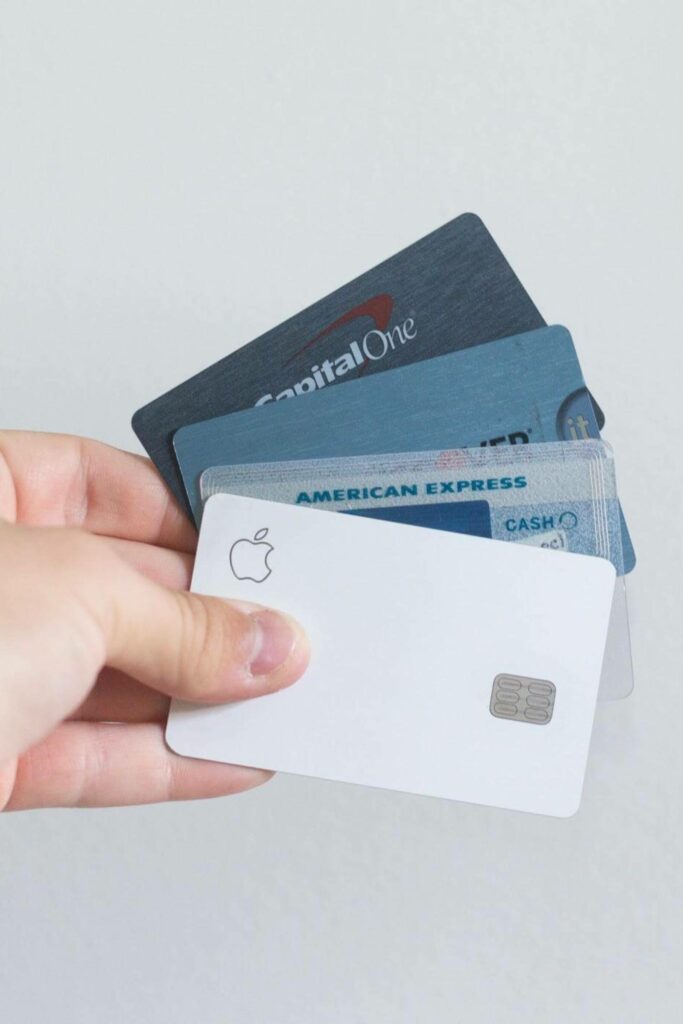Last year, reports surfaced that American household debt reached a record high of just over $15.24 trillion. Let’s type that out in round numbers.
$15,240,000,000,000
That’s a lot of zeros!
To put that into perspective, U.S. household debt was at $12.68 trillion at its peak in the third quarter of 2008—right before the Great Recession rocked the world.
That means one thing.
Americans might be taking on too much debt.
Where is the Debt Coming From?
According to the New York Federal Reserve Bank, a little over a third is housing-related in the form of mortgages and HELOCs (home equity lines of credit). Housing debt sits at $10.67 trillion as of the end of September. while other non-housing related debt makes up the rest at $3.95 trillion.
Mortgage debt is on the rise, HELOC debt continued to decline, and non-housing debt jumped $61 Billion.
For the full report, you can head here.
Americans are borrowing more money, but is this good or bad?
Well, it depends on how you look at it.
From an economic standpoint, the economy is rebounding from the pandemic quite nicely. Consumer confidence might be high and that could be a reason why households are taking on more debt.
Unemployment numbers are near pre-pandemic lows and wages are projected to rise pretty significantly this year.
But from a household standpoint, it could mean that people are financially strapped and need to make ends meet with credit cards.
There are many stories the data can tell, but ultimately you should still do what’s best for you.
However, there is one thing that everyone should do.
Reframe Your Debt Mindset
If you reframe your mindset surrounding your debt, you will do the same things you would whether the economy is strong or weak.
You’ll act the same whether consumer debt is at record highs, record lows, or anywhere in between.
You won’t be shaken by your credit card statement or mortgage bill or any economic reports that are released.
Reframing your debt mindset is a separate beast from your overall money mindset. You can have a great relationship with money and a poor relationship with debt.
By reframing your debt mindset, you’ll be at peace with where you are. You may even get new ideas for how to pay off your debt faster than you are now.
Here are four steps to reframing your debt mindset.
1. Realize That There isn’t Good Debt or Bad Debt
We’ve all heard the terms before. Certain debt is called “good” debt and certain debt is called “bad” debt.
Good debt usually refers to a mortgage, student loan, or business loan. Basically, it’s anything that can make you some money off the debt.
Bad debt usually refers to credit card debt, car loans, and other types of debt that has no monetary benefit to you.
But in reality, there is no such thing as good debt or bad debt.
The problem with debt in general is some people can use a certain kind of debt to make money while others can use the same kind of debt and get into a lot of trouble financially.
There’s a lot more to consider when taking on debt than if it’s simply “good” or “bad.”
An example of this is a mortgage. Mortgages are usually considered good debt because a house appreciates. However, if you only look at that on a surface level as “good,” you’re going to be disappointed.
When you buy a house, you don’t get to just sit in your home watching your money grow. There are things that eat into your home’s value and how much you actually make from it.
Things that can eat away at the value of your home include:
- Home maintenance. When something breaks, you have to pay money to fix it.
- Upgrading your home. In order to get more —so you can actually sell your home
- Price negotiations. You may not get market value when you do sell your home
- Market downswings. If it’s a buyer’s market or home values drop, you’re not going to get as much when you sell
Related: 7 Hidden Costs of Buying a House
A mortgage is not always going to be an investment. In fact, most of the time it isn’t an investment.
There are still two different kinds of debt but I label them differently. They are “Necessary Debt” and “Unnecessary Debt.”
Necessary Debt
A necessary debt is debt that is necessary to earn income such as a business loan or loan for an investment property.
Necessary debt is also debt that is unavoidable to purchase something unless you are making a huge amount of money. This is where a mortgage and a car loan come in.
Most of us don’t have an extra $150,000 or more laying around to purchase a home with cash. And it takes a huge amount of time to even save that amount for most of us so we need to take out a mortgage to purchase a home.
Unnecessary Debt
On the other hand, unnecessary debt is debt that you don’t really need to take out and can be things like using credit cards to pay for trips or things that you can’t afford.
I took out a bunch of unnecessary debt when I bought my first home back in 2012. That added almost $850 to my monthly payments.
However, when used responsibly, some unnecessary debt can be ok provided it doesn’t control you.
Your necessary and unnecessary debt may not be the same as my necessary and unnecessary debt. You have to do what’s best for you.
How this Reframes Your Debt Mindset
Think about what runs through your mind when you know you have “bad” debt.
Do you feel bad? Does it feel hopeless? Do you say things like “oh well!” or “I don’t care?”
It may give you a feeling of anxiousness where you can’t wait to get rid of it. You may feel guilty.
None of those feelings are good. In fact, I’m convinced that they actually hinder your ability to make changes.
Think about it. If there isn’t any hope, why try to change something? If thinking about the “bad” debt you have put’s you in a “whatever” mood, why try and make progress?
Changing the conversation from “bad/good” to “necessary/unnecessary” takes the emotional aspects out of your debt.
It gives you the objectivity to say phrases like “this is a debt that is necessary” and “this debt wasn’t necessary so I’m going to pay it off.”
Changing the conversation to “necessary/unnecessary” also has another nice side effect. Since you’ll no longer feel bad about debt, you’ll have no problem talking about it to other people.
This opens up the doors for accepting suggestions on how to handle your debt and help others do the same when you’re on the other side.
All this from changing two words.
2. Take On ONLY Necessary Debt
The second step is a looking ahead item.
From here on out, only take on necessary debt.
Now, this does not mean the normal “never use credit cards” and “always pay for your car in cash” advice that has been recycled over and over again.
It means only take on debt when you need to take on debt—and only if you can afford it.
Some examples of necessary debt are:
- Taking out a mortgage to buy a house
- Financing a new (or new to you) car
- A small business loan to finance a startup
- Taking out a second mortgage for an investment or rental property
That list is certainly not exhaustive. Necessary debt for you is going to be different than necessary debt for me.
The key is don’t take it on if it isn’t debt that is necessary.
An Exception to this Rule
I’m big on teaching others to manage their money in a way that will work for them, regardless if it’s the way I would manage my own money or not.
That includes debt.
An exception to the “only take on necessary debt” rule that I’ve made in my own finances is to only take on as much unnecessary debt total as I can pay off in a month.
So let’s look at a nice round example. If you have $500 extra per month after all your bills are paid and your savings are in order, then you are safe to take on a debt that is $500.
Remember, this isn’t $500 per month but the total debt.
That way if things go haywire or you see a reason to need to pay it off quickly, you can do so at any given time—even it’s the first month of payments.
So if you have $1,000 a month in surplus, you would be able to take on something like a $1,000 credit card purchase with 0% financing for 12 or 18 months and pay it down.
But you’d also have the option of paying it off in a single payment if it would ever be necessary since you have that money each month anyway.
Some of you may say, “Well, since you have the money every month, why not just buy it outright?”
Honestly, that’s a great question to ask yourself before making any unnecessary debt purchase even if you have the money to buy it in cash.
It really depends on the purchase and if you want to part ways with that money all at once or take on a little debt to make the purchase.
Budgeting and finance are about freedom.
How This Reframes Your Debt Mindset
Taking on only necessary debt will reframe your mindset by challenging how you spend your money. You’re now looking at your debt before the purchase rather than after.
When you look at a debt before you decide to take it on, you have to examine:
- if you really need the item you’re purchasing at all
- if you should wait to get it after you’ve saved
- what the best way to pay for the item is
- if the purchase would help or hinder your progress toward your goals
- how your purchase fits into your values
It helps you make every purchase according to your values by making it just a little bit harder to make a big purchase without examining if you should be making that purchase.
It also paves the way for step number three.
3. Pay Off Unnecessary Debt
Now that you’ve learned that there is only necessary and unnecessary debt, and you’ve decided to only take on necessary debt, it’s time to start taking care of that unnecessary debt!
Let’s get a plan together to pay off unnecessary debt.
First things first, if you haven’t already, take a look at all of your debt and determine if it was necessary or unnecessary. This will look different for everyone.
The idea is to have two lists, one that you’ve deemed unnecessary debt and the other for necessary debt.
This is also a great time to determine if you want to pay off any necessary debt as well. If you do want to pay off some necessary debt as well, add it to the list of unnecessary debts.
Then, it’s time to decide how you’re going to pay it off.
Decide HOW You Want to Pay it Off
Now, it’s time to decide how you’re going to pay it off.
Will you use the debt snowball method? Are you going to focus on the debt with the highest interest rate? How about the longest term?
How you decide to pay it off is up to you. I have an ebook guide with 14 ways to pay off your debt fast below.
I used every one of these methods to pay off $26,000 in only 11 months.
Fill out the form below to get the guide delivered to your inbox.
The one thing I always like to do—whether I’m concentrating on paying off the lowest debt, lowest monthly payment, or the highest interest rate—is use the debt snowball method.
Decide on how much extra money you want to put toward your debt each month. Then, keep throwing that much money at your debt even after you pay some off.
How This Reframes Your Debt Mindset
Paying off debt is an incredible feeling.
A couple of years ago, when I paid off $26,000 in 11 months, it was an amazing feeling to have that weight lifted off of my shoulders.
It freed up almost $600 a month in my budget. Imagine what you can do with $600 every month. That’s $7,200 a year!
Paying off debt—even if you’re no longer looking at it as “bad”—gives you the confidence that you can do anything in your finances.
And when you’re confident, things seem to be a lot clearer for you. You no longer are fearful of making the wrong decision. You don’t have a scarcity mindset anymore and you believe that you can make it financially.
This is the power of paying off your debt. It’s a huge accomplishment and makes you feel like you’re on top of the world.
4. Live Below Your Means
The last step in reframing your debt mindset is to live below your means.
Just because there is no such thing as bad debt anymore doesn’t mean you want to start making excuses for “necessary” debt.
The goal is to always be in control of your debt, whether it’s necessary debt or unnecessary debt. If you are needing to take out debt simply to live, that speaks to a bigger problem.
It could be that your spending lifestyle doesn’t currently match your income level. You may need to reduce your spending or increase your income.
It may also be as simple as getting a handle on your budget.
It’s my firm belief that if you are having trouble living below your means, starting with the root of your money tree—your budget—is the best thing you can do.
Create a budget for yourself that helps you be who you are and is based on what you value to help you live below your means.
You can also look to save money by cutting out things in your budget that aren’t important to you.
How this Reframes Your Debt Mindset
By living below your means, it ensures that you don’t have to use any debt to make ends meet.
This keeps you in control.
When you’re in control, you get to decide what debt is necessary and unnecessary instead of letting your situation dictate that choice.
You also will have less fear and worry about your financial situation. This brings more clarity and control into your financial life as well.
Living beneath your means will help you see debt as a tool rather than a crutch or necessity. And moving forward, you’ll have more freedom.
Conclusion
With more and more people taking on debt in America, it’s more important than ever to make sure that you are in control of your debt.
Reframing your debt mindset will change the way you see debt and the way you use debt. It will also change the way you see your finances and life in general.
You’ll be doing what is best for you no matter where the economy is at or what level your debt is at.
Use these four steps to reframe your debt mindset and start experiencing the freedom that brings.


















